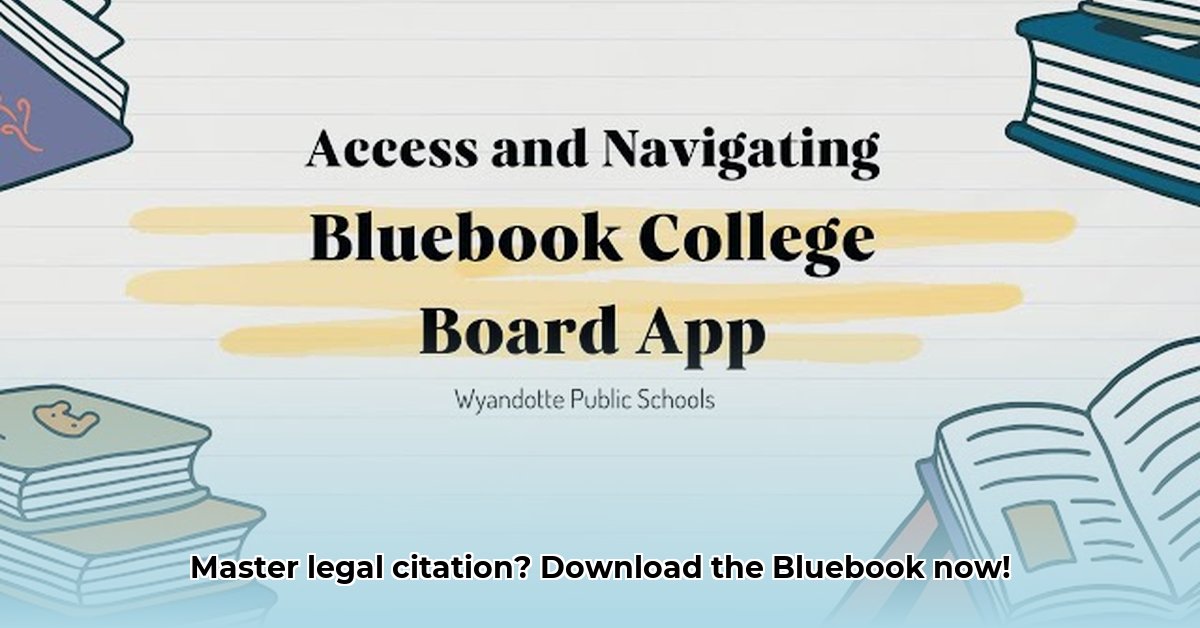
Legal citation can be daunting, but mastering the Bluebook is key to success in legal studies and practice. While a free, official Bluebook PDF download isn't available, obtaining access and understanding its intricacies is achievable with this guide. We’ll walk you through securing a copy, navigating its structure, and applying its rules effectively.
Obtaining the Bluebook: Your First Step
Unfortunately, a readily available "free Bluebook PDF download" doesn't exist. The Bluebook is a copyrighted publication, and its authors and publishers require compensation for their work. Here's how to get access:
Your Law School Library: Start here! Most law school libraries offer the Bluebook in print and digital formats through their online portal. Check your library's website or ask a librarian.
Online Legal Bookstores: Reputable online legal bookstores sell the Bluebook, both physically and as e-books. Compare prices and look for potential discounts.
Used Bookstores: Check both online and brick-and-mortar used bookstores for more affordable options.
Choosing between a PDF and a physical copy is a matter of preference. PDFs offer portability and search functionality, while physical copies allow for easy annotation.
Navigating the Bluebook: Unveiling its Structure
The Bluebook's detailed rules might seem intimidating, but its structure is logical. It’s a set of instructions designed to standardize legal citations—cases, statutes, books, articles, and more. You'll use these sections most:
The Rules: This is the core, providing precise formatting instructions for each citation type.
The Examples: These are invaluable! Numerous examples illustrate how to apply the rules. Study these thoroughly for clarity.
The Table of Contents: Your roadmap through the book, guiding you to the appropriate citation rules for your source type.
The Index: A powerful search feature for locating rules based on source type (e.g., "federal statute," "treaty").
Citing a Case: A Practical Example
Let's cite a case, a common task. This step-by-step guide highlights the process:
Identify Source Information: Gather all necessary details: case name, court, reporter, volume, page number, and year.
Locate the Rule: Use the table of contents or index to find the section on case citations.
Apply the Rules: Follow the exact formatting (punctuation, capitalization, italics, order) specified in the Bluebook.
Verify Your Work: Compare your citation to the Bluebook's examples to catch any errors.
Common Citation Types: A Quick Overview
The following table provides a simplified overview of common citation types. Always consult the Bluebook for precise formatting.
| Source Type | Example (Illustrative Only) |
|---|---|
| Case | Smith v. Jones, 123 U.S. 456 (1900). |
| Statute | 42 U.S.C. § 1983 (2023). |
| Book | SMITH, JOHN, LEGAL WRITING 101 (2d ed. 2024). |
| Law Review Article | DOE, JANE, The New Law, 123 HARV. L. REV. 456 (2000). |
Avoiding Common Citation Mistakes
Even experienced legal writers make mistakes. Here are common errors to avoid:
Punctuation Errors: The Bluebook is exacting; a misplaced comma can invalidate a citation.
Inconsistent Formatting: Maintain consistency in italics, capitalization, and underlining.
Missing Information: Ensure all required information is present in each citation.
Incorrect Abbreviations: Use only Bluebook-approved abbreviations.
Mastering the Bluebook: The Path to Proficiency
Acquiring the Bluebook is the first step. Mastering legal citation requires consistent practice. Consult the Bluebook frequently—its rules will become second nature with time and dedication. Accurate citation reflects your professionalism and academic integrity.
⭐⭐⭐⭐☆ (4.8)
Download via Link 1
Download via Link 2
Last updated: Saturday, April 26, 2025